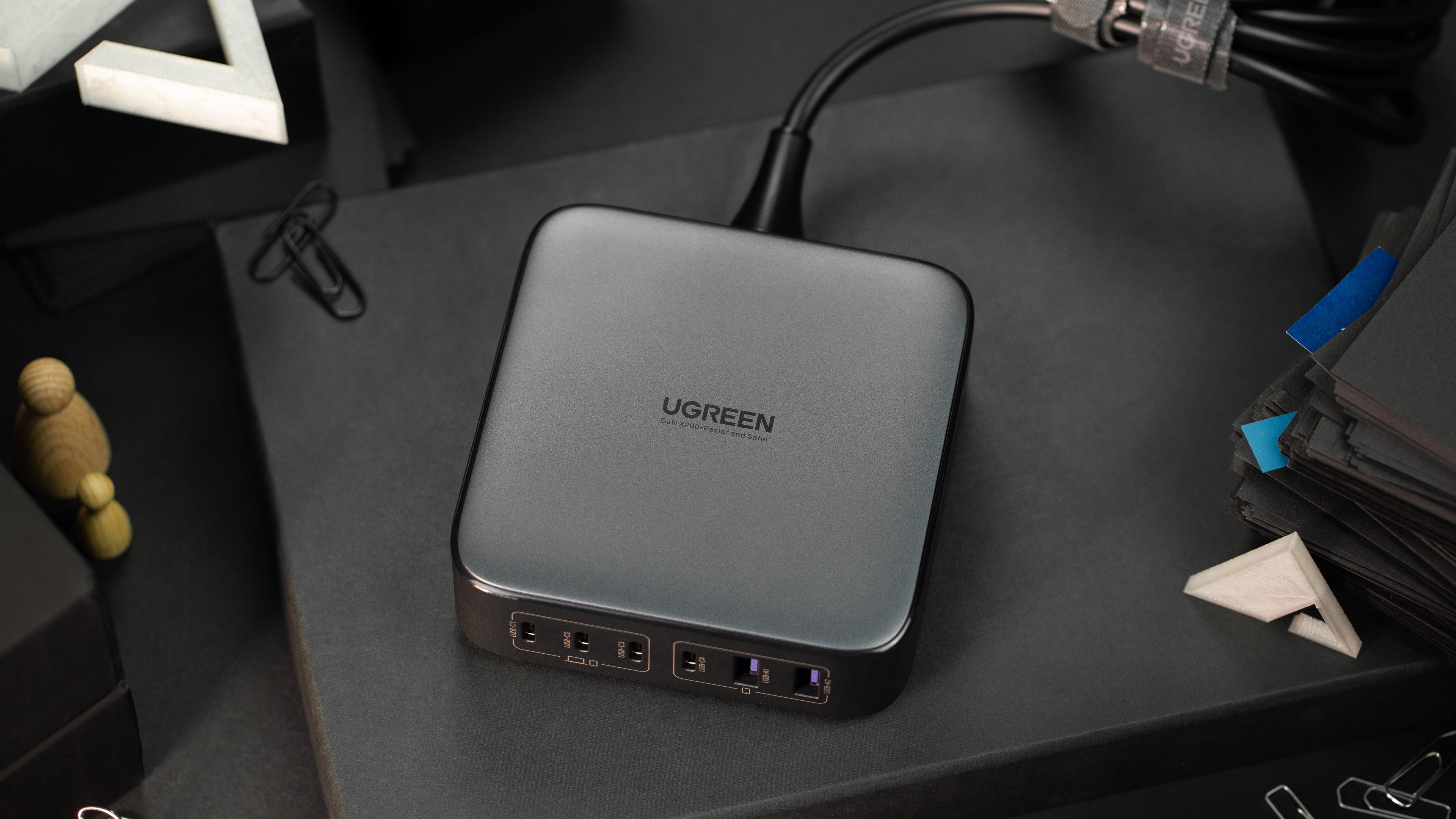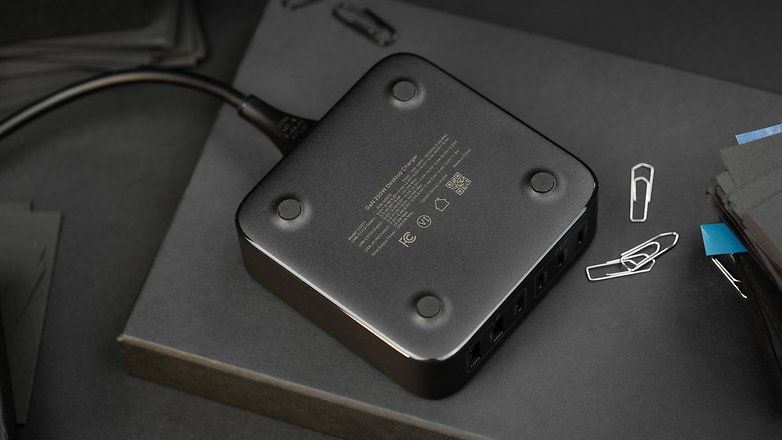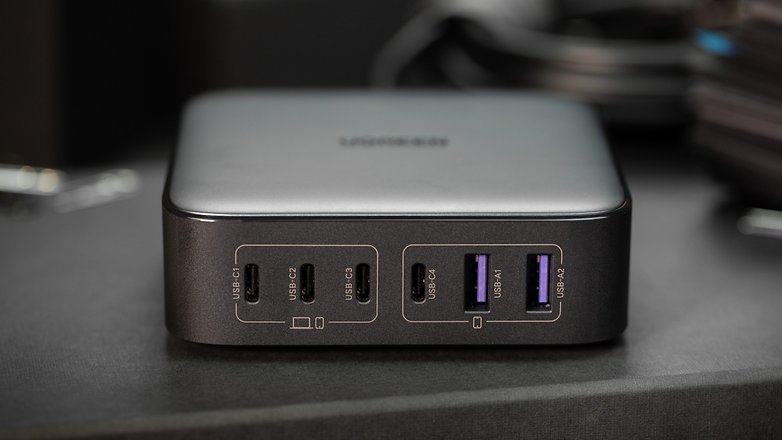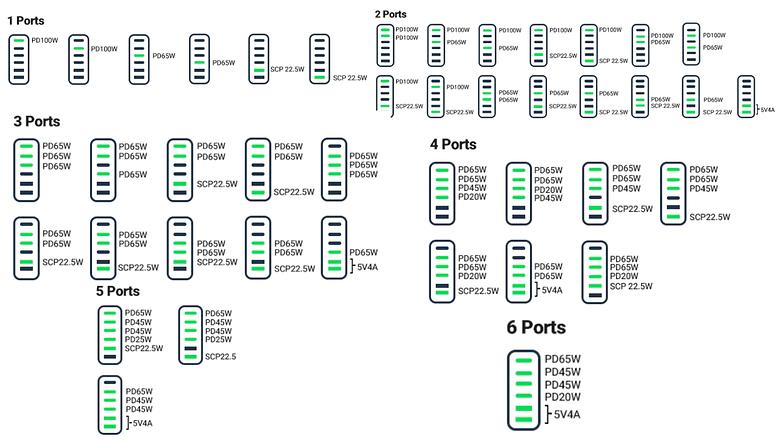
In recent years, Ugreen has made a name for itself as a specialist in all aspects of charging. With the Nexode 200W, Ugreen further expands its Nexode product line. In our NextPit review, we find out what Ugreen’s $200 power supply can do, who the device is mainly aimed at, and whether it is worth the money.
Ugreen Nexode 200W in a nutshell
Those who know me know that full batteries are important to me and that I almost always have all types of cables and suitable charging plugs with me when I’m on the road. Based on our NextPit test last year, I therefore also privately bought the 100-watt charger from Ugreen—and was already fully satisfied then. The 100-watt charger was also not quite cheap at that time at around $100 but it was worth its price for me.
I don’t know if Ugreen’s pricing has anything to do with the wattage and each watt can be had for one dollar—but now the 200-watt charger costs around $200. That’s certainly not cheap. But again, the charger is absolutely worth its price, provided you need the full power because while the Ugreen Nexode 200W is probably among the most expensive representatives of its class, it is also among the best. The power supply offers plenty of power for all your gadgets and comes in a compact and high-quality format. Read everything else in the NextPit review.
This article is part of a cooperation between NextPit and Ugreen. This cooperation has no influence on the editorial opinion of NextPit.
Ugreen Nexode 200W Charger: Unadorned design and quality workmanship
The quality of Ugreen’s products is remarkable compared to similar products, which is of course also the case with the 200-Watt charger.
It starts with the fact that the charger comes in a high-quality cardboard box, which is more common for smart products, such as expensive smartwatches or high-end smartphones.

The technology is built into a solid plastic casing. To prevent slipping and guarantee a secure stand, four plastic feet are installed on the underside. There are a total of six ports on the charger’s front. The USB-C ports can handle up to 100 W, the USB-A ports up to 22.5 W. If all ports are used to the maximum, the output power is distributed as follows:
- USB-C1: 65 W
- USB-C2: 45 W
- USB-C3: 45 W
- USB-C4: 20 W
- USB-A1 + USB-A2: 20 W

Ugreen Nexode 200W: This is how fast the charger works
With the Ugreen Nexode 200-Watt Charger, you can charge up to six devices simultaneously
, two of which could be laptops with a charging power of up to 100 watts each, for example. However, the output power varies depending on which slots are occupied. To help you figure out which power you can charge with which slot assignment, Ugreen has created a graphic that doesn’t look so clear at first glance. However, once you understand the system, everything is logical.

The attentive reader will have noticed immediately: As soon as more than two ports are occupied, the power of ports 1 and 2 drops from 100 watts to 65 watts. By the way, the values were more or less the same in the test. We used a power meter and connected various devices.
The biggest challenge was to find a device that can be charged with 100 watts via USB-PD. Manufacturers like Xiaomi, Oppo & Co. are capable of 100 W and more, but they use their own proprietary standards. Or the devices are charged at 65 watts or less. My MacBook Pro M1 is charged with around 62 watts via the Magsafe interface as well as via USB-C with Power Delivery. A 16-inch MacBook Pro can again be charged with the promised 100 watts (power consumption in the test: 95.4 watts).
Two notes at this point: The charging cable you use is also crucial for USB-PD. The cable has to be PD-capable so that the full power can flow. This requires the USB Power Delivery protocol: An integrated chip negotiates how much current is allowed to flow through the cable.
In practice, I use the Nexode 200W as a kind of power supply replacement and connect my devices directly to the charging station here at work. However, this only works if your gadget has a battery, i.e. a notebook. The power supply is not completely uninterruptible. During the test, I noticed a short drop in power when connecting and disconnecting additional cables, which could lead to a reboot (and data loss) in a mini-PC with a USB-C port, for example.
Ugreen Nexode 200W: Clear buy recommendation! But not for everyone.
The Ugreen Nexode 200W is my new permanent companion—both at work for simultaneous charging of laptop, tablet, smartphone, and more. but especially when traveling. Anyone who has a family and children knows how annoying it can be when your own chargers and cables are occupied by family members or “briefly borrowed” during a vacation.
As described above, I’ve been using the Nexode 100W for over a year now—and it’s always the first device I unpack in my vacation spot. Thanks to the many slots, this way everyone can charge the various gadgets without having to “borrow” anything. Thanks to the double power of the Nexode 200W and more slots, there is definitely no shortage of charging slots anymore.

Even though the Nexode 200W is not lightweight at around half a kilo, it reliably replaces the many chargers you usually carry around in a compact format. The device is especially useful for people who want to charge a lot of devices at the same time—and here, especially larger devices are included, such as power-hungry laptops. Otherwise, there are certainly cheaper options.
You should also be sure that your own (large) devices support USB-PD. That should almost always be the case. But in order to get the full power of the Ugreen Nexode 200W, this is something you must research beforehand. If you have considered and verified all these points, however, the Ugreen Nexode 200W is a clear buy recommendation.
We at NextPit have already tested a number of Ugreen devices:






